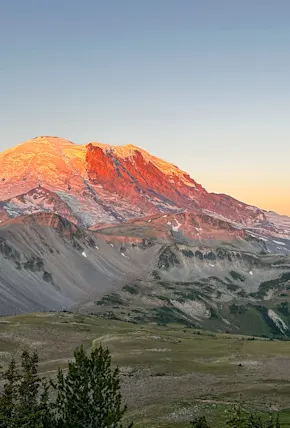There comes a moment almost every day in which I ask myself “how the hell did I get here?” This brief period usually appears during monotonous chores, mid-afternoon meetings, or mid-workout side aches, all of which I’ve learned to solve by simple gritting my teeth and pushing through. Some things, however, don’t work that way.
Last month I attempted an off-trail route in Glacier National Park called the Norris Traverse. It’s a relatively remote, super scenic, and scree-laiden scramble on the east side of the park. Very few people know about the Norris, let alone hike it. Why did we want to then? A variety of reasons, namely the solitude, uniqueness, and the chance to truly, fully unplug.
What we got was a little different than what we expected.


















